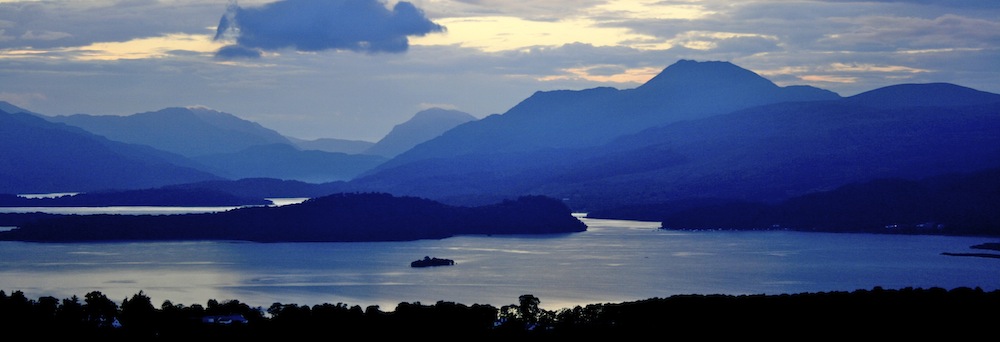Gartocharn's Geology
Contributed by Rachael Ellen B.Sc Hons
Duncryne
Around 350 million years ago, the Dumpling (the local name for Duncryne) was anything but a scenic viewpoint. It was part of a volcano, bringing up molten rock from deeper levels in the Earth and erupting them to the surface.
The Dumpling itself was a ‘vent’ in this volcano, that is, acting as the conduit from which molten rock would erupt. From this vent, lots of small pieces of rock debris erupted into the air as volcanic ash and partially molten rock ‘bombs’, and fell back into the volcano as well as the surrounding area. This volcanic debris had a tendency to landslide back into the vent during inactive volcanic periods, choking up the vent and in time cementing together to form a very resistant overall mass of rock.
Gartocharn
Moving into Gartocharn itself, around 380 million years ago, our feet would not be standing on the familiar ground outside the village shop, but on a hot desert full of red coloured sand.
If we were to fast-forward through time whilst standing there, flash floods would bring large piles of sediment down from higher lands, eroding larger rocks into pebbles, followed by periods of dry desert again. This series of red sands and pebbles would later form into solid rock, known as the Old Red Sandstones (ORS), which outcrop all over Britain.
Over the millions of years to follow after the deposition of the ORS and the eruption of the Dumpling, the volcanic landscape surrounding the Dumpling has been ground down by the actions of ice age glaciers and eroded by weather to leave what we see today – the low lying farmlands of Gartocharn and the friendly bump that is the Dumpling.
Further Information
For further information on the geology of the area including the Conic Hill and Balmaha, please click here to read a more detailed geology of the area.
For a generalised geological story of Loch Lomond, follow the link to http://www.loch-lomond.net/theloch/geology.aspx.

